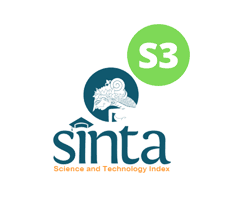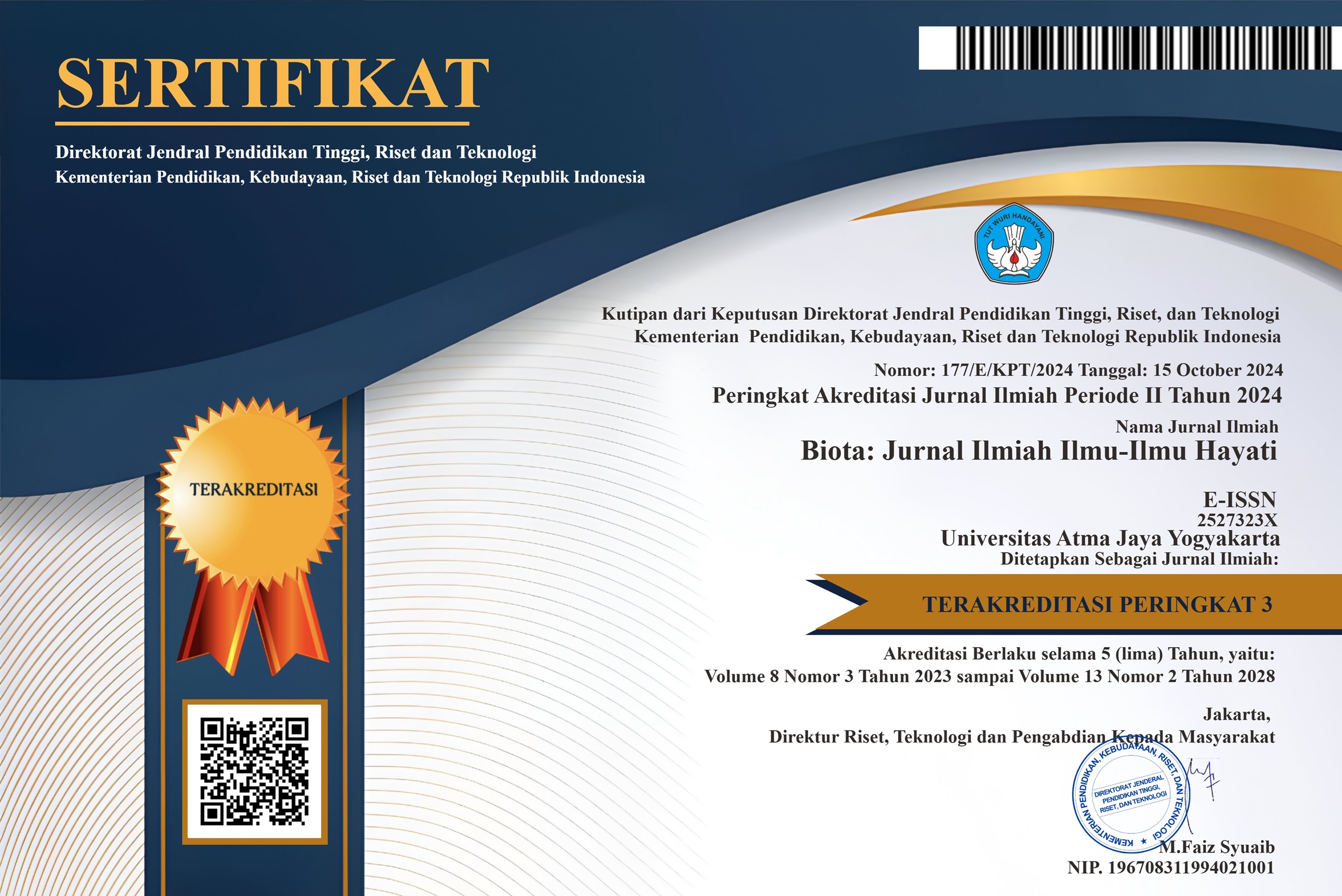Distribusi Defisiensi Glucose-6-Phosphate Dehydrogenase (G-6-PD) pada Berbagai Populasi Masyarakat di Indonesia
DOI:
https://doi.org/10.24002/biota.v9i1.2834Keywords:
G-6-PD deficiency, genetic marker, malarial endemic, Indonesian populationsAbstract
Glucose-6-phosphate dehydrogenase (G-6-PD) deficiency is the most common human enzymopathy, nearly 400 different biochemical variants of the enzyme have been described worldwide. The heterogeneity of these abnormal hemoglobins are very extensive in some populations such as the results of malarial natural selection and the use as genetic markers for certain populations. As in others malarious areas in Southesat Asia, the presence of G-6-PD deficiency in most Indonesians might be prevalent. Nevertheless the frequencies and epidemiological distribution of these hereditary blood diseases among Indonesians has not been well known yet. This study have screened 2 059 unrelated, apparently healthy adult blood samples from 17 different populations. The present investigation had shown that the G-6-PD deficiency was commonly found in lesser Sunda populations sampled, hold beyond Bali to the east in significant frequencies range from 5% to 13.5%.
Downloads
Published
How to Cite
Issue
Section
License
Authors who publish with Biota : Jurnal Ilmiah Ilmu-Ilmu Hayati agree to the following terms:
- Authors retain copyright and grant the Biota : Jurnal Ilmiah Ilmu-Ilmu Hayati right of first publication. Licensed under a Creative Commons Attribution-NonCommercial 4.0 International License that allows others to share the work with an acknowledgment of the work's authorship and initial publication in this journal.
- Authors are able to enter into separate, additional contractual arrangements for the non-exclusive distribution of the journal's published version of the work (e.g., post it to an institutional repository or publish it in a book), with an acknowledgment of its initial publication in Biota : Jurnal Ilmiah Ilmu-Ilmu Hayati, and as long as Author is not used for commercial purposes.












